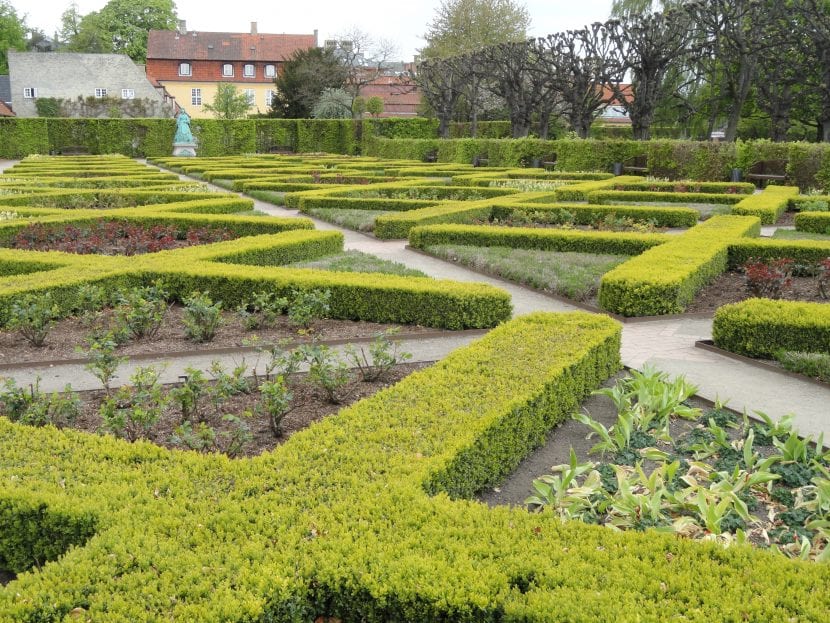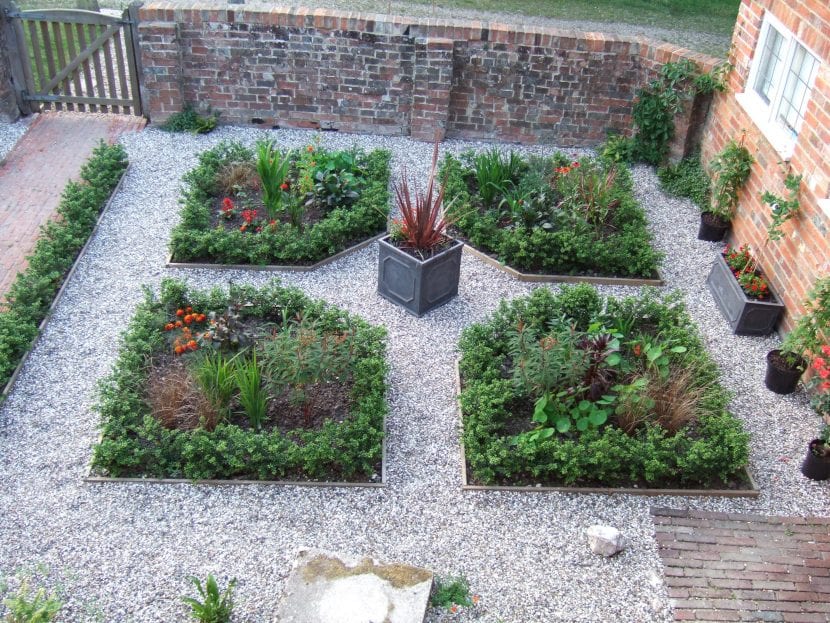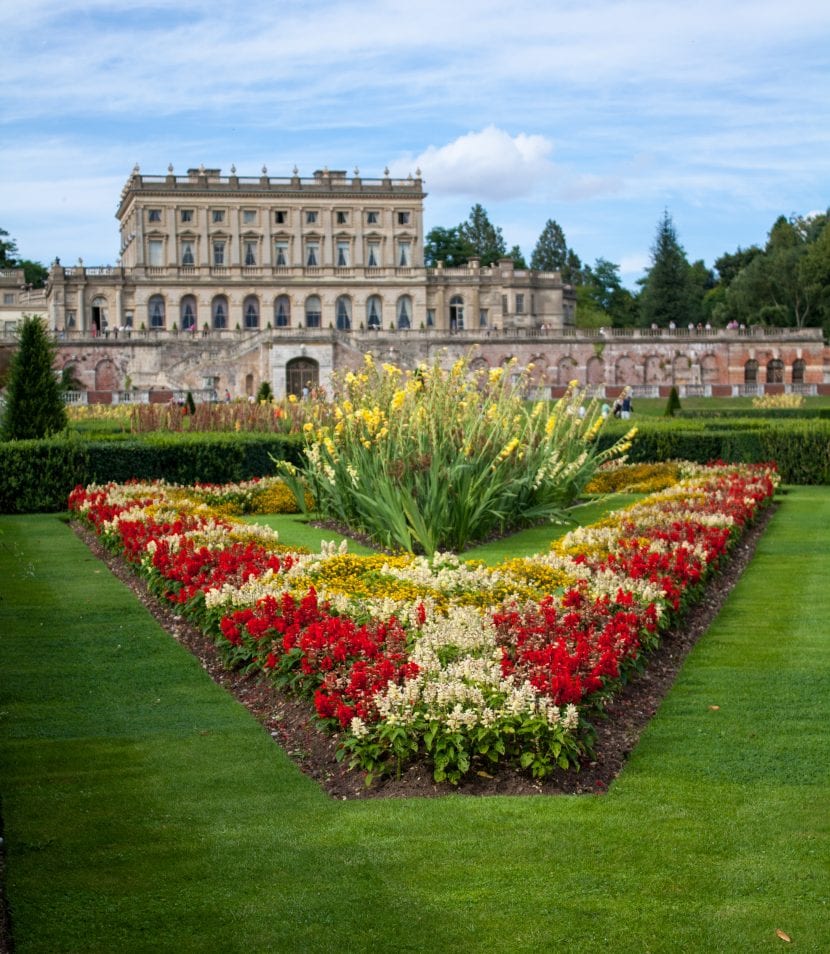
In gardens, whether they are small or large, the different sections can be divided in many different ways: with physical barriers such as a wall, with statues or street lamps, or with plants. When we decide to opt for the latter, the wide range of possibilities opens up before us, since depending on the species they can be useful to make, for example, flower beds.
As you can see in the image, choosing the bushes and flowers well, getting a perfect garden is not difficult. But of course, for that you have to know what are the flowerbeds. So let's solve your doubt 🙂.
What are flower beds?

A parterre, or paterre, is a ground level 'formal' garden design that is made up of flowers or herbs, which is generally delimited by shrubs, dwarf conifers and lively flowers, or by coupled stones forming a protection of the interior flower beds, and gravel walks that are arranged with a design that is usually symmetrical.
What is its history?

The term "parterre" comes from French, which means "on the ground". And it was there, in France, where they were first developed, by Claude Mollet., the founder of a very important nursery dynasty of the XNUMXth century. The idea came to him when he looked at the paintings of the painter Etienne du Pérac, who returned from Italy to the castle of Anet, where both he and Mollet were working.
In 1614 the flower beds in broderie appeared for the first time in an engraving by Alexandre Francini, from a view of the plans of the plantations of the gardens of Fontainebleau and Saint-Germain-en-Laye. A few years later, in 1638, Jacques Boyceau, a French garden designer, described what they must look like: »Flowerbeds are the low ornaments of gardens, which have great charm, especially when viewed from an elevated position: the borders are made of various main and secondary shrubs of various colors, formed in various ways, such as compartments, foliage, embroidery, arabesques, grotesques, guilloches, rosettes ».
Now that you know what they are, if you want to make one, click here.